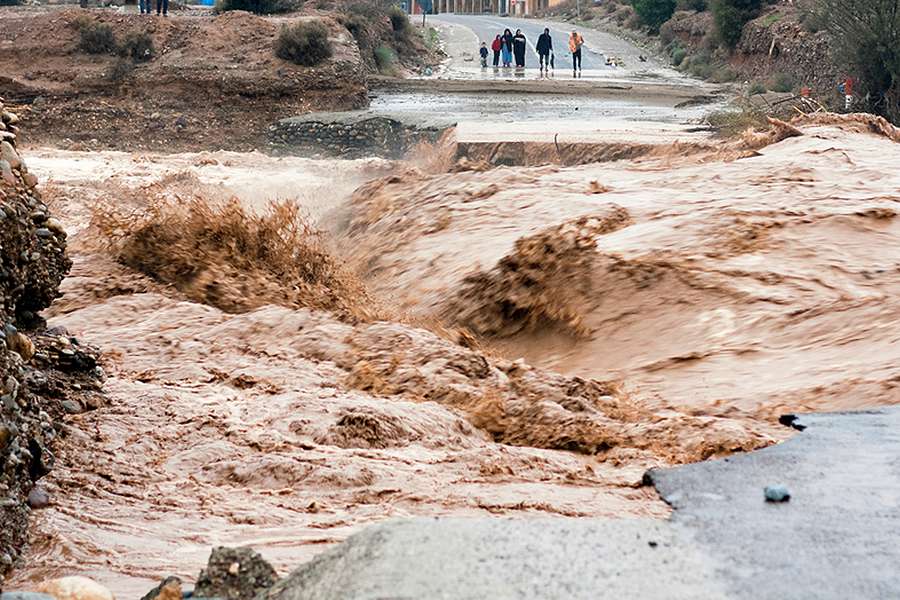How can Peru prepare to withstand more devastating floods and landslides?


For most Peruvians, this year’s floods have been the worst in living memory. Ten times the usual amount of rain has fallen on Peru’s coast, swelling rivers which caused widespread flooding, and triggering huge landslides which tore through shanty towns.
More than 100 people have died, nearly 158,000 are displaced and 210,000 homes are damaged, according to Peru’s emergency operations centre. The country’s infrastructure took a big hit: 260 bridges collapsed and nearly 3,000km of roads are unusable, cutting off hundreds of villages and towns.
Peru’s rainy season falls broadly in the first quarter of every year. It is also known as “landslide season”, but few can remember huaycos, as they are known in the local Quechua language, of such intensity and scale. As Peru’s weather service reported record rains in the north of the country in March, usually dry rivers turned IGNORE INTO raging torrents – and never have so many people lived in their path.
The country is ill-prepared for seasonal floods at the best of times, let alone those of such brutality that have laid bare Peru’s patchy infrastructure, its disorderly and informal growth, and its often non-existent urban planning.
“In the midst of disaster a big opportunity has opened up for the country,” Jorge Nieto, Peru’s defence minister, told the Guardian in the flood-hit town of Huarmey. “I believe we’ve learned the hard way that this country needs a reconstruction of historic proportions.”
Nieto, who has been leading recovery efforts and deploying armed forces across the country, said cities and towns lacked basic flood defences, and that the 30-odd rivers which flow from the Andes to the Pacific would need to channelled, particularly in urban areas.
As Peru lurches between drought and floods, reservoirs should also be installed in the mountains, Nieto said, so that rainwater can be stored in the water-stressed country. “That way we would guarantee our water supply so that the rains become a blessing, rather than a problem,” he added.
The natural disaster, which meteorologists are calling a “coastal El Niño” has caused $3.1bn (£2.5bn) worth of damage, chipping 0.5% off the country’s projected GDP for 2017 from 3.4% to 2.9%.
The reconstruction will cost around $9bn, President Kuczynski said last week. The first stage would pay for the “immediate reconstruction” of cities and towns. The second, longer phase would involve building infrastructure to make Peru a more “modern and organised” country, faced with the likelihood of more unpredictable and extreme climate events.
The floods also temporarily threatened the water supply in Peru’s capital. More than 25 landslides, carrying tree trunks, dead livestock and rubble from destroyed homes clogged water treatment plants on the Rimac river, forcing the waterboard, Sedapal, to suspend the intake and treatment of water for five days.
The second-biggest desert city after Cairo, Lima is more used to having too little water than too much, and the city’s water infrastructure was “insufficient” to deal with the deluge, admits Sedapal’s board director, Rudecindo Vega.
“Three months ago, the government was preparing for a drought. Weeks later, we have had a quantity of rain that is exactly the opposite of a drought,” he told the Guardian.
The natural disaster highlights with “brutal clarity” Lima’s insufficient water provision infrastructure just as President Kuczynski had made a commitment to provide Peruvians with 100% water coverage, 24 hours a day, by the end of his five-year term. Around 1 million Peruvians in Lima lack access to running water.
“People are living in places where they shouldn’t,” Kuczysnki said last month, referring to the tens of thousands of flood victims who lived in areas hit by landslides. “We have to control the local councils so they don’t allow land trafficking in gullies and on hills. We are seeing the results,” he insisted.
Around half a million people live in floodplains in Peru, according to a report by the Autoridad Nacional del Agua, Peru’s water agency. Mass migration from rural areas to cities means that people have “squatted wherever they can in marginal areas where nobody would want to live if they were not forced to by poverty,” says Ernesto Ráez, a tropical ecologist and former adviser to Peru’s environment ministry.
The reconstruction of parts of Lima and other towns and cities on Peru’s coast must be “adaptive or corrective” says Ráez, and could involve the relocation of hundreds of thousands, even millions, of people. Climate change will mean extreme weather is more frequent.
The United Nations has also warned that Peru must invest in multi-hazard warning systems and ensure its citizens better understand the risks of such disasters. “This is a large-scale singular event which needs to be viewed in the context of a warming planet, where episodes of extreme weather variability are becoming more evident,” says Robert Glasser, the UN special representative of the secretary-general for disaster risk reduction.
“If we are to succeed in preventing disasters like this, and to reduce disaster losses, then we need to ensure there is a much broader understanding of the nature of disaster risk in society. This includes better understanding of the impacts of climate change and how it alters local weather patterns.”




